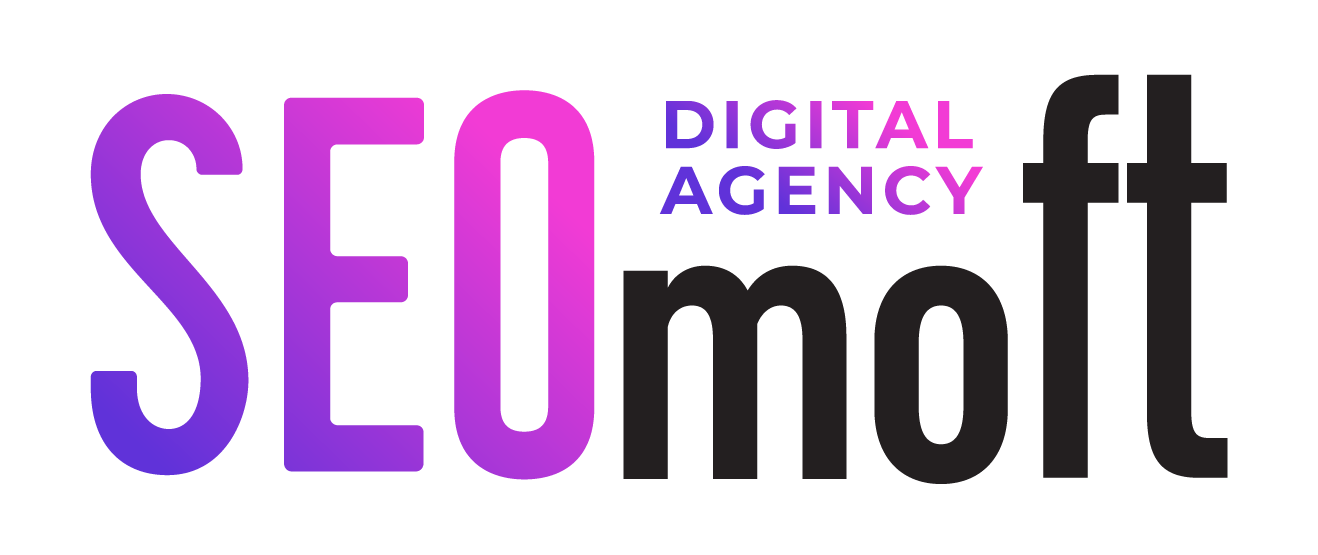If you’re looking for longevity and cost-effectiveness when it comes to your digital marketing efforts, organic search strategies driven by SEO activities are your best choice. Implementing an SEO strategy is cheaper than paid advertising and if done right its effects are long-lasting.

Getting the key elements of SEO right can help you win clients, conversions, and sales. The majority of marketers believe that SEO is the key to online success, which is why modern businesses allocate half of their marketing budget to it. At SEOmoft we believe that taking the time to outline a proper SEO strategy can revolutionize your online traffic and your business as a whole.
The importance of a winning SEO strategy in 2021
Pandemic aside, the trend was already showing more people searching online for products and services than ever before, especially on mobile devices. If you want to make sure your business appears at the top of SERPs, attracts more organic traffic, and increases revenue, you need to have a solid, complex SEO strategy.
A winning SEO strategy is a broad plan that focuses on the big picture, and it is made up of various facets and tasks that all work together to accomplish your larger goals of better visibility and increased traffic which will ultimately bring more revenue. Now is the time to evaluate your current SEO strategy, consider your online marketing goals, and determine how well your SEO strategy is meeting these goals. If you find that your SEO strategy is not aligned with your goals or that you are not satisfied with the results, we recommend you, partner, with professionals.
In this guide, SEOmoft agency introduces you to a few elements of an effective SEO strategy for 2021. You might be asking yourself: “Are these the only parts of SEO I need to know?”. The response is far from it. However, getting these important pieces right is a great start.
10 tips for your SEO strategy in 2021

1. Write for humans, not search engines. Digital content writers mistakenly focus on writing for search engines instead of the human beings who are actually reading the content. They worry too much about content length, keyword density, using keyword variations, and adding local modifiers because they think it could potentially help SEO efforts. Google and other search engines don’t need you to write for them. They need you to write on a topic that will offer a thorough, easy-to-understand answer for the audience.
Ultimately, your priority should always be to provide your audience with what they are looking for, and that only comes through writing engaging content.
2. Identify each keyword’s intent. Every keyword has an intent behind it. Maybe it’s to look something up. Or buy something. Or compare product A with product B. And the better your content can match that search intent, the better it will rank. So your first step is to figure out your target keyword’s search intent.
3. Focus on user experience (UX). Not only do users value a good experience and easy navigation, but it also helps Google’s crawlers scan your content and determine your SERP rankings. Excellent user experience will help to reduce your website bounce rate, improve rankings, and generate better conversion overall.
There is nothing worse than having to navigate a site that can be barely used. In fact, after more than a few seconds of frustration, most people don’t bother and Google will struggle to make the best out of it too. Things like dead links, error pages, and messy site structures will all impact what people think of your website.
4. Build relevant links. A key aspect in building domain reputation/site authority is link-building. Links are an important ranking factor. Crawlers discover content by following links through to subsequent pages and judging how relevant they are to a search query. This goes for internal linking as well.
Being successful in building a good link profile is to ensure that you vary your profile a bit, that you don’t always go after one type of link, and that you keep a healthy ratio of types of links that you do go after.
5. Technical SEO. Search engine optimizationoften starts with making it easier for web bots to discover, crawl, and index a site. This has been a priority since the beginning of the search engine era. Technical SEO includes techniques such as server maintenance, the use of structured data, or just including a sitemap. Remember that when something on the technical side of SEO is out of whack, your entire website can suffer.
6. Solve the issues that slow down your website. These days, people expect instant information and instant results. If your site takes an age to load, they’ll simply move on. Check if you need to delete old/defunct plugins, clean up your code, optimize and compress your images, etc. Your business site needs to be quick, accessible, and easy to use.
7. Pay attention to search engine algorithm updates. Search engines get smarter and more intuitive by the day. The core updates and tweaks to the algorithm are constant and often unexpected, with sites either benefitting or being penalized for how closely they adhere to the most recent update.
8. Optimize for visual search. More people are conducting more visual searches than ever before. Considering that basically 100% of Google Lens searches are done on mobile devices, it makes sense that Google would prefer mobile-friendly websites. So make sure your mobile performance is top-notch. Traditional image SEO techniques (like optimizing image filenames and alt text) seem to also help with Google Lens rankings. Also, it is known that high-authority pages and sites are more likely to appear as Google Lens results.
9. Improve and update content. High-quality content continues to be the one by which SEO pros acquire links to help increase rankings to help create streams of traffic to a website. You need to remember that there is no real finish line when it comes to your SEO content strategy. Constant updates and battling with your competitors means that there’s always work to be done, not to mention that you can still improve on what you’ve done already. Going back and updating content with keywords, backlinks, and better readability is a great way to get started.
A trend that is worth embracing in 2021 is publishing research content. Bloggers and journalists love data. And if you can hook them up with a stat, a survey, or an industry study, they’ll link to you like there’s no tomorrow.
Closing line

SEO is still a viable channel for startups heading into 2021. This blog article only scratches the surface of what SEO is all about. It’s a discipline that grows more complex day by day, but giving you some tried and true tips that have stood the test of time in this field, hopefully, will bring you closer to your desired marketing goals.
Don’t put too much pressure on yourself to meet all SEO best practices immediately, too. Tuning your website into the perfect SEO machine tends to be a constant process that is best tackled point by point, so keep this page around and refer back from time to time when you need some inspiration, or contact our experts for SEO advice!



